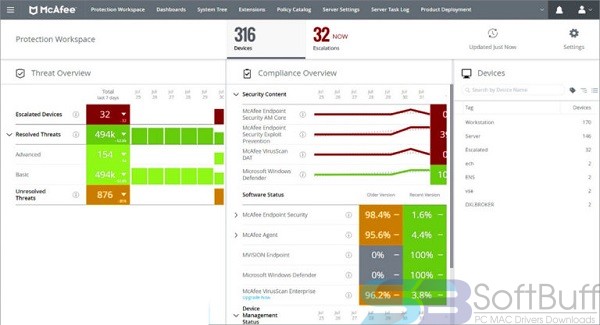

Threat Prevention uses the Exploit Prevention content file to protect applications such as Internet Explorer, Microsoft Outlook, Outlook Express, Microsoft Word, and MSN Messenger. This feature monitors user-mode API calls and recognizes when they are called as a result of a buffer overflow. Instead the documentation has a blurb about "monitoring the APIs" that I'm a little nervous about.Įxploit Prevention stops exploited buffer overflows from executing arbitrary code. Previous versions of Endpoint Security integrated into Outlook, so long as it was not the Office 365 variant. It also doesn't support IE6, but I'm unable to feel sad about that. That's unfortunate, because one of my biggest uses for proper endpoint security is to keep the old stuff that can't be updated humming along for as long as possible.

The first thing I note is that the latest version of Intel Security Platform Endpoint Protection (version 10) does not seem to support Windows XP 64-bit. The third is a "web control" widget that takes the form of browser plug-ins to prevent you from doing anything overly stupid. The first is an anti-malware scanner/threat protection widget that scans for general oogly booglyness. Intel Security’s Endpoint security comes with three primary sub-components. Note that this is a separate test from its ability to clean stuff that has managed to either sneak past the prevention defences, or that was already there. In testing the prevention capabilities of I threw a standard barrage of tests at the thing and it survived.


 0 kommentar(er)
0 kommentar(er)
